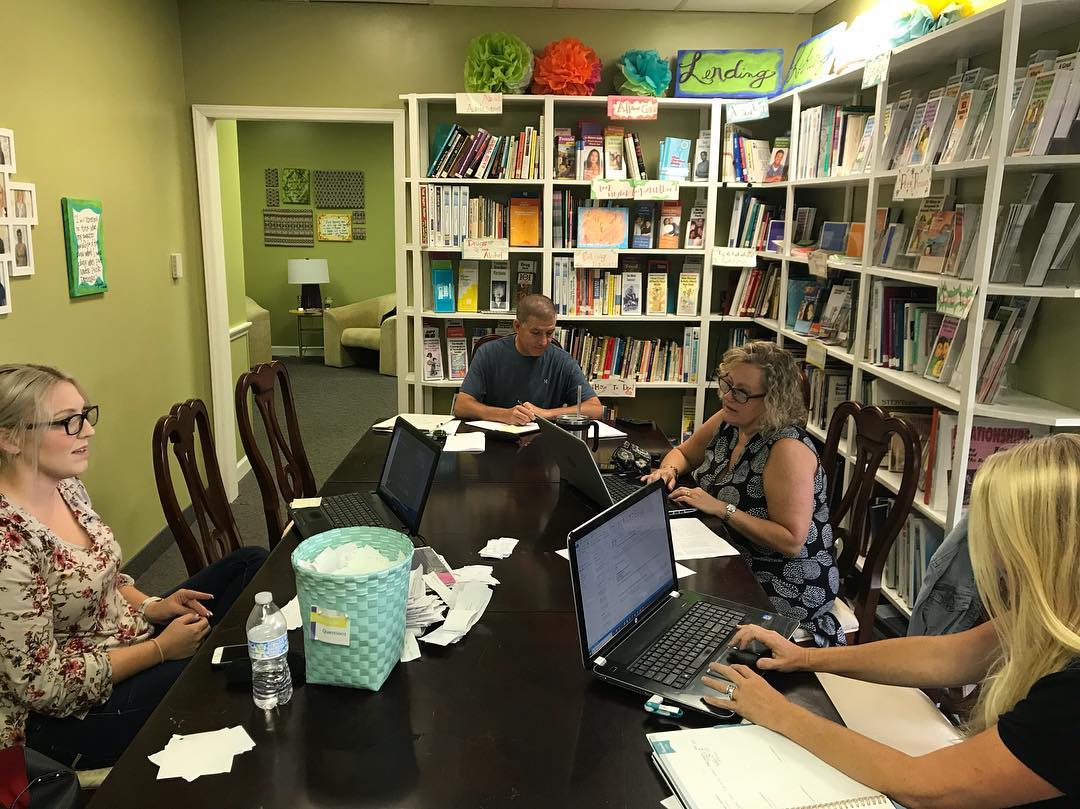By John Bailey
Last March in reaction to the COVID-19 pandemic, facemasks, virtual meetings, social distancing, sheltering in place, temporary shutdowns, all became part of a new reality.
Like so many other organizations at that point, the Catawba County United Way (CCUW) braced itself for the operational changes it would be making. The CCUW also reached out to its funded partners to gauge the challenges they were facing.

With more than a year of COVID-19 behind us, the United Way began checking back in to see how lasting the changes have been for its funded partners.
For Council on Adolescents (COA), the impact was immediate last spring as schools closed to in-person learning.
In 2020, the CCUW helped fund two of the Council on Adolescents programs: Healthy Youth Education and Lunch Buddy Mentoring – both in-school programs.
“Last March, for Healthy Youth, we went completely virtual, creating online content to send to teachers to send out to their students,” COA Executive Director Jordan Ledford said.
Healthy Youth covers reproductive health and safety education to 7th-9th graders and puberty education to 5th and 6th graders, as well as a booster class for 10th grade students. The COA created Power Point versions of their courses to share with the two public school systems they were working with – Hickory Public and Catawba County School Districts.
That was just the beginning of the shift to a new system to reach students last year.
Now, with school districts transitioning to four days of in-school instruction this April, there will be change again, but after what the Council on Adolescents went through in 2020, Ledford is sure her agency is ready for anything.
Last year, the PowerPoint courses were a quick response, and Ledford admits it might not have been the most engaging system, but at least it was a way to reach students.
Still, like so many other non-profits, the COA’s numbers served last year was impacted because of COVID-19. The program usually sets a goal of reaching close to 6,000 students. In 2020, they served 4,692.
At the start of the current school year, the agency focused on creating more online Interactive items including videos of the health instructors teaching and talking through parts of the course work.
The agency also did in-person teaching in fifth grade while students were on a hybrid schedule – two days in class and two days remote.
“It’s not as easy as just going in and teaching like it used to be either because the kids are split up by gender,” Ledford said. “Finding extra classrooms for them and making sure everything is sanitized in between, are things we didn’t think about before.”
The size of the classes have been impacted as well with the average number of students traditionally being around 15. During the pandemic, the in-person classes could be as small as four or six students while the number of virtual students would depend on if their school had them set up to view the class online.
Ledford said her health educators experienced what many of us have when we attend Zoom meetings.
“One class was completely virtual and most of them had the cameras either off or pointed at the ceiling, so you’re talking to a blank screen,” Ledford said.
Prior to spring break this year, COA taught in person to a lesser extent for seventh and eighth grade.
“I actually got to teach as well recently. They are a little behind, but it was nice to be back in person and you can tell they want that kind of interaction,” Ledford said. “They just kept saying how happy they were that I was there in person.”
There was even more challenge for COA with its Lunch Buddy Mentoring program, which had to take a more dramatic shift to reach students.
Check back next Friday at https://www.ccunitedway.com/news for the rest of that story.
